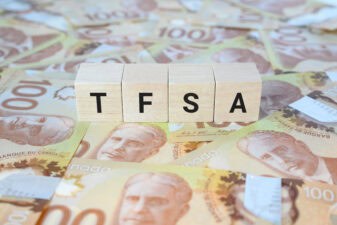Canadian bank stocks are under significant pressure because of the coronavirus pandemic. Canada’s largest lender Royal Bank of Canada (TSX:RY)(NYSE:RY) is down 18% since the start of 2020, while the worst affected, Bank of Montreal, has lost 30%. There is growing speculation of worse ahead for Canada’s banks as the economic fallout intensifies.
Worsening outlook
The March job numbers were particularly worrying. Job losses reached a record high, and the unemployment rate spiked to 7.8%. The IMF anticipates that Canada’s GDP will shrink by over 6% during 2020. That indicates that there is further pain ahead for Canada’s big banks.
A key fear is that the economic shocks triggered by the coronavirus will substantially impact Canada’s already heavily leveraged households. According to OECD data, they have a debt-to-disposable-income ratio of around 182%. This makes Canadian households the ninth most indebted globally. Much of that is mortgage debt after a decade-long housing boom, which saw the national average home price soar by 71%. This will spark a sharp downturn in the credit cycle, as mortgage defaults rise, weighing heavily on the big banks’ earnings.
Deteriorating credit quality
There are fears that as unemployment rises, mortgage defaults will expand rapidly, impacting bank earnings. A combination of worsening economic conditions, along with the threat of housing prices cascading lower as the market slows and inventory grows, poses a significant risk to bank earnings. The housing boom, which has existed since the end of the 2008 Great Recession, became a powerful earnings driver for the Big Five banks.
By the end of the fiscal first quarter 2020, Canadian residential mortgages comprised 45% of Royal Bank’s total loans. It is similar number for each of the big banks, but it increases to 51% in the case of Canadian Imperial Bank of Commerce (TSX:CM)(NYSE:CM). This is because Canadian Imperial is the most domestically focused of the Big Five.
Canadian Imperial is highly reliant on lending activities to generate revenue. For the first quarter, 57% of its revenue was comprised of net interest income. This indicates that Canadian Imperial is particularly vulnerable to the expected sharp economic downturn and weaker housing market.
Royal Bank, however, is far less dependent on loan revenue and the domestic housing market to drive earnings. Canada’s largest lender implemented a strategy to diversify its earnings. Royal Bank has done this by boosting its U.S. exposure and growing its wealth management and insurance businesses.
As a result, only 41% of Royal Bank’s first-quarter revenue was comprised of net interest income. The remainder consisted of premiums, fees, investment income and transaction revenue from the bank’s capital markets, wealth management, and insurance operations.
Looking ahead
Canada’s economic slump and housing market downturn will have a less-direct impact on Royal Bank compared to some of the other Big Five banks, notably Canadian Imperial. While the economic slump will be deep and potentially worse than the 2008 Great Recession, Canada’s big banks will survive. Strict prudential regulation, tight mortgage underwriting, and regulatory back stops will prevent the economic fallout from damaging Canada’s major banks.
The strength of Canada’s financial system is evident from data from the Canadian Bankers Association. At the end of 2019, a mere of 0.24% of mortgages were in arrears. At the end of the first quarter, a low 0.45% of Royal Bank’s loans were impaired, while for Canadian Imperial that number was a modest 0.47%.
Importantly, the loan portfolios of Canada’s banks have conservative loan-to-valuation ratios (LVRs). Royal Bank’s LVR at the end of the first quarter was a healthy 53%, while for Canadian Imperial it was 64%. When combined with a significant proportion of mortgages being insured, it creates a buffer to absorb the impact of higher loan delinquencies and credit losses.
Foolish takeaway
Canada’s banks are well positioned to manage the emerging economic crisis triggered by the coronavirus. Royal Bank is the best positioned of the Big Five to weather the current crisis and emerge in solid shape. While waiting for the inevitable economic recovery, you will be rewarded by Royal Bank’s dividend yielding a juicy 5%.
 Spring Sale
Spring Sale







